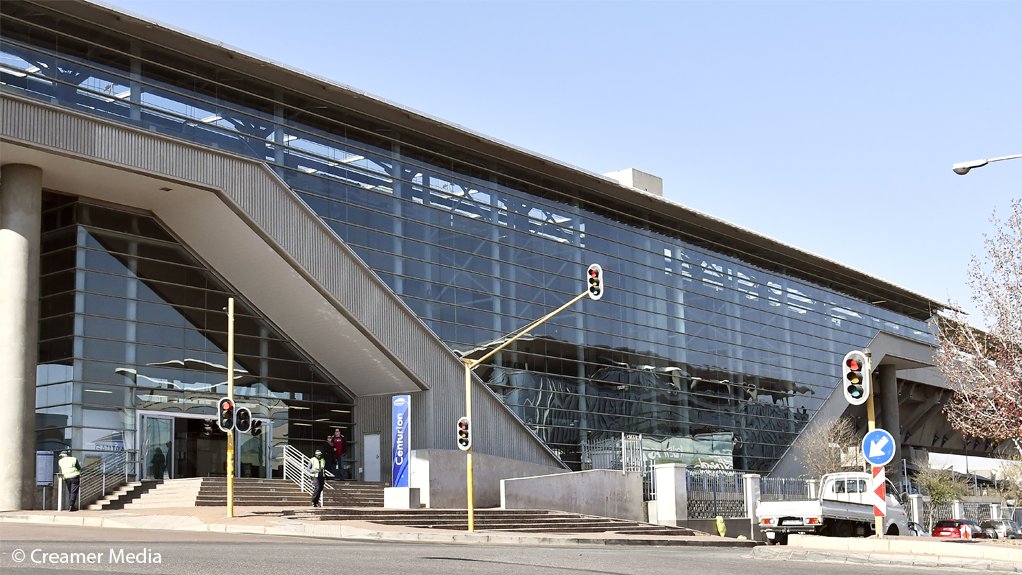
While “doing okay” in terms of non-fare revenue from advertising, the
“one big trick” the Gautrain system has missed out on has been to participate
in the rise in property value around Gautrain stations, says Gautrain
Management Agency (GMA) COO William
Dachs.
Since the establishment of the Gautrain in 2010, property prices around
some of the stations have grown significantly.
Property analyst company Lightstone says property prices close to the
Rosebank station achieved an additional 2.5% growth compared with prices for
property in the surrounding areas.
“If we are given the go-ahead for the Gautrain expansion project, we will
be talking about property rights around the stations,” says Dachs. “It is the
single biggest non-fare revenue source we can possibly get.”
Governments worldwide have been using various mechanisms for capturing
its share of the rise in land values as a result of public infrastructure
investments.
Many economists suggest that cities could benefit by funding transit
system development costs, as well as a major portion of operating costs, from
land value capture, by taxing a portion of the rise in value of adjacent
properties that result from transit accessibility.
Dachs says the GMA is currently engaging with the City of Tshwane and a
number of property developers to see how to guide development around the
Centurion station to everyone’s benefit – including the GMA.
The Centurion Gautrain station opened in 2012 when the area around the
station was mainly low density housing, with some commercial buildings along
West avenue, explains Dachs.
“The Gautrain station quickly became a park-and-ride station. Most
commuters simply drove to the station, parked, got on the train and then did
the reverse in the evening without spending any time in the station
precinct.
The result was that the Gautrain parking quickly filled up, with more
parking space required.
The GMA discussed with the City of Tshwane its need for more space and
how this could be managed so that future developments around the station could
be much denser, and with multipurpose uses.
The end result was that the Gautrain was allowed to develop around 1 700
at-grade parking bays north of the station, while the city and GMA would
cooperate in projects to achieve the desired denser development, thereby giving
effect to what is known as transit-oriented development (ToD) – where more
people spend more time either in their homes, offices or in retail spaces,
explains Dachs.
This has led to the establishment of a working group comprising the City
of Tshwane, the GMA, Bombela and all the major developers active in the
Centurion station area.
“The working group is first looking at quick wins in terms of making the
precinct far more pedestrian friendly, improving access and encouraging longer
stays by commuters in the area,” notes Dachs.
The GMA has already invested in upgrading intersections around the
station.
“The intention is to develop a station precinct plan that looks at all
available areas and puts forward a coherent strategy for ToD development,” says
Dachs. “The final stages will be implementing the developments by
developers.
A 2018 World Bank study of 32 metro systems indicates there is not one
public transport system that does not require public funding.
The South African government pays a ‘patronage guarantee’ to the Bombela
Concession Company (BCC), as the Gautrain operator, with this guarantee
reaching around R1.5-billion for the 2017/18 financial year.
“New metro lines cost more money to build and operate than can be
recouped from fares, but operational expenditure, including renewal, can be
self-sustaining if fares are sufficient and there is a good level of non-fare
revenue,” says Dachs.
For the past three years, Gautrain revenue has been between 90% of 105%
of operating costs. This, however, excludes maintenance and refurbishment
costs.
The Gautrain expansion project will happen in five phases, and will add
146 km of rail and 19 new stations to the current 80-km, ten-station network.
It should take between 30 and 40 years to complete all five phases.
It is expected that the Gautrain expansion project could create 211 000
jobs over all the phases, with R19-billion to be spend on black-owned entities
and R79-billion on local goods.
Phase 1 will go from the current Marlboro station, via Sandton, to
Randburg, Cosmo City and Little Falls.
It will add around 25 to 30 km rail to the current network, as well as
three new stations and a new tunnel linking through to Marlboro.
Phase 2 should link Jabulani, in Soweto, to the Gautrain system.
The GMA is currently awaiting National Treasury’s nod of approval for
the expansion project.
“I think the signs are positive,” says Dachs.
The Gautrain currently runs around 6 800 trains a month, with 99% availability, 98% punctuality and a 100% passenger safety record. https://www.engineeringnews.co.za/article/gautrain-looks-at-expanding-non-fare-revenue-with-centurion-pilot-project-2019-07-01

